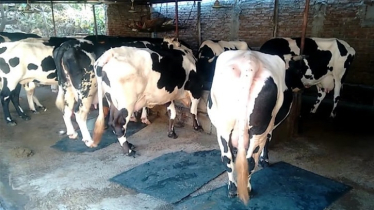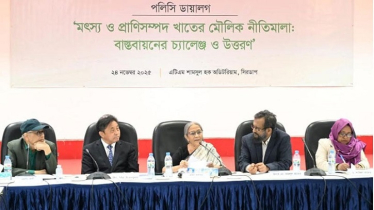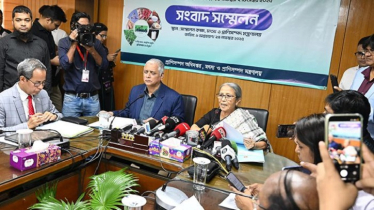
In addition to significantly boosting the rural economy, the livestock sector has become increasingly sustainable, making Rangpur a self-sufficient district in the production of meat, eggs, and milk to meet the protein needs of its population.
“In the last 15 years (2009–2024), the district has increased production of meat, eggs and milk by two to three times and achieved revolutionary success in the livestock sector,” District Livestock Officer Dr Md Abu Sayeed told.
During this period, the Department of Livestock Services provided training to farm owners, unemployed men and women, small and marginal farmers, and landless people on animal husbandry, poultry, and grass cultivation. Many of these trained individuals have since achieved self-reliance by engaging in commercial animal husbandry, poultry farming, and dairy production.
As of 2024, entrepreneurs have established 7,199 livestock farms in the district. These include 3,149 cow farms, 702 goat farms, 364 sheep farms, 587 layer chicken farms, 1,735 broiler chicken farms, 450 layer duck farms, and 212 pigeon farms, creating employment opportunities for more than 40,000 people. In addition, five parent-stock broiler farms, 11 parent-stock layer farms, four layer hatcheries, and two broiler hatcheries have been set up.
In 2024, farmers produced 2.13 lakh metric tonnes of meat against the district’s annual demand of 1.40 lakh metric tonnes for its 32 lakh residents. Meat production had been only 0.88 lakh metric tonnes in 2009. Similarly, egg production reached 45.67 crore pieces in 2024 against a demand of 33.28 crore pieces, compared to only 17.50 crore eggs produced in 2009 across all eight upazilas. Milk production also increased, rising to 2.10 lakh metric tonnes in 2024 from 1.79 lakh metric tonnes in 2009.
According to Dr Sayeed, there were 15,66,102 cows, 47,943 sheep, 2,279 buffalos, 10,33,393 goats, 10,71,109 ducks, 22,75,4147 chickens at the family level, along with 11,91,845 commercial layer chickens and 15,03,325 broiler chickens in 2024. He added that the number of cows, buffaloes, goats, ducks, and chickens continues to increase every year at both household and commercial farm levels, contributing significantly to rural economic development and helping many households achieve self-reliance.
Speaking to Habibur Rahman and his wife Monwara Khatun from Chhatas Chawrabari village under Kawnia upazila said they began their journey with just one cow in 2001. They now own 18 cows producing 200 liters of milk daily, along with five pregnant cows expected to calve soon. They also produce 150 metric tonnes of vermicompost annually, rear 32 Black Bengal goats, and maintain 33 turkey hens that produce eggs, resulting in 900 turkey chicks so far. Rahman estimated the total value of their livestock resources at around Tk 70 lakh and said they have eight permanent workers on monthly salaries.
Mahmudul Hasan, a young entrepreneur from Faridabad Daktarpara village in Taraganj upazila, has set a strong example of success by establishing a dairy farm 12 years ago. He founded Mahmudul Dairy Farm as a commercial milk-producing enterprise in his backyard, where he now employs four workers. After selling 75 cows and bullocks over the years, he currently maintains 20 cows, including 10 milk-giving cows that produce 70 to 80 liters of milk daily.
Mahmudul said he bought two foreign dairy cows in February 2014, and within a few months both cows calved and began producing 10 to 12 liters of milk per day. “My dairy farm is now running in profit because I have already regained the Tk 15 lakh I initially invested. Everything from the farm now is a bonus,” he said.
Similarly, housewife Aktari Khanam from Jummapara village in Taraganj upazila and young entrepreneur Shahinul Alam Bakul from Moyenpur village in Mithapukur upazila have also become self-sufficient through cattle rearing on their respective farms.





